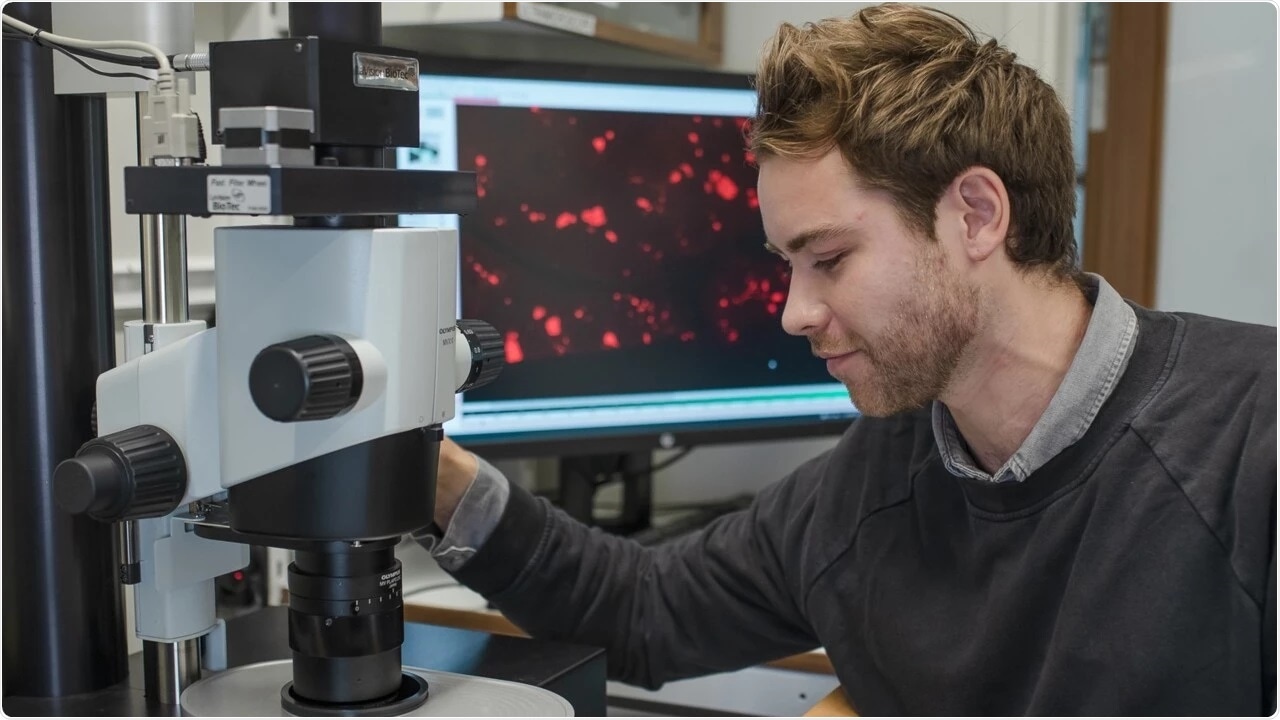Scientists from the Umeå University recently demonstrated a process by which specific cell types in human organs can be investigated with micrometer precision. The method can be employed to reveal earlier unidentified alterations in the pancreas; however, it can also be used to examine other human organs and diseases.

Max Hahn, doctoral student at Umeå Center for Molecular Biology, studies a tissue sample with a light sheet fluorescence microscope. Image Credit: Mattias Petterson.
This method may contribute to an advanced understanding of how cellular changes are related to different disease conditions.”
Ulf Ahlgren, Professor, Molecular Medicine, Umeå University
The scientists divided the organs by employing a 3D-printed matrix, creating portions of tissue with the ideal size for optical imaging using 3D technology. The pieces were then labeled to visualize primarily any protein or cell type of choice. As each bit of tissue has known coordinates, the individual 3D images can be put together using a computer into a three-dimensional jigsaw puzzle to form an intact human organ.
Smaller than dust
The process helps generate high-resolution 3D images of human organs of virtually any size, with constant micrometer precision—that is smaller than a dust particle.
Previously, it was possible to generate high-resolution images of biological material using technologies like light-sheet fluorescence microscopy and optical projection tomography, something that the scientists have used in this research.
However, the earlier methods offered no usable way of labeling the different cell types or proteins pinpointed for the research, for example, using fluorescent antibodies, while analyzing specimens on a larger scale, like an entire organ. This issue is now solved with the new process.
The Umeå scientists employed the method to investigate the human pancreas. The pancreas consists of hundreds of thousands of insulin-producing cells named the Islets of Langerhans. These islets carry out a major function in the production of insulin and are a key element in diabetes when the production is disturbed.
Employing the novel process, the scientists were able to illustrate earlier unrecognized features of the human pancreatic anatomy and pathology. This includes areas with extremely high islet density.
The observations might have effects for anything from preclinical to clinical areas, for example, to refine islet transplantation protocols for individuals with diabetes, or when creating non-invasive clinical imaging to investigate the pancreas in individuals with diabetes.
Understand diseases
Beside using the new method to study diabetes, it can also improve understanding of other pancreatic diseases, not least pancreatic cancers, and we have initiated collaborations with clinical researchers in Umeå to look into that.”
Ulf Ahlgren, Professor, Molecular Medicine, Umeå University
Ulf Ahlgren further adds, “But the technology itself should be possible to use to study other organs and diseases in similar ways since it enables the study of where cellular changes take place in a full organ context, their amount and relationship to nearby tissues and cell types.”
Source:
Journal reference:
Hahn, M., et al. (2021) 3D imaging of human organs with micrometer resolution - applied to the endocrine pancreas. Communications Biology. doi.org/10.1038/s42003-021-02589-x.